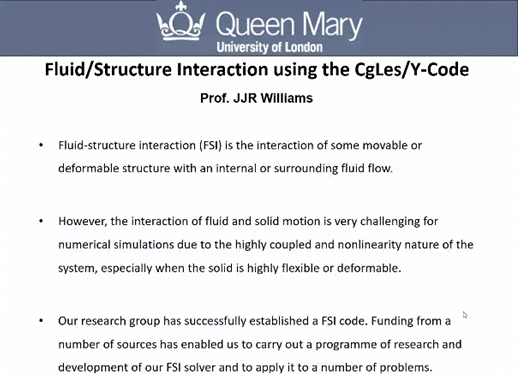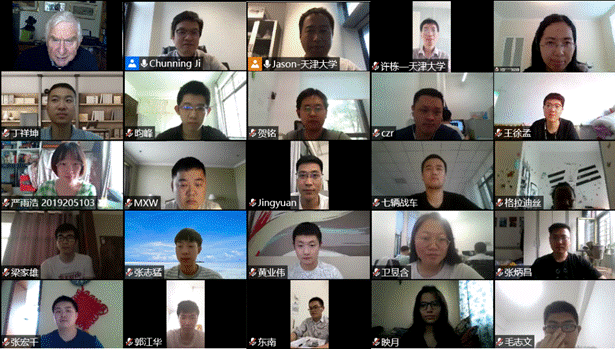On June 11, 2020, the “Innovation Base of Earthquake Engineering Comprehensive Simulation” held the 11th“Cloud Report” and invitedProf.John Williams from Queen Mary University of London,to present a report named “Fluid/Structure Interaction using the CgLes/Y-Code”.

This report was hosted by Associate Prof. Jie Xu from the Department of Civil Engineering. Prof. Chunning Ji from the Department of Water Resources and Harbor Engineering, attended the report and delivered a welcome speech.
This online report covered the original development of the CgLes/Y-Code, and its subsequent development and use by Hohai University, Tianjin University, Sichuan University and Queen Mary University of London.The audience at the meeting had a deeper understanding of the CgLes/Y-Code in the field of Fluid/Structure Interaction. After the report,Prof.Williamsand the audience conducted an online discussion on related issues and took a group photo.
This “Cloud Report” attracted a total of 134 teachers and students from Tianjin University,Hebei University of Water Resources and Electric Engineeringetc.

Prof. Williams joined Queen Mary University of London (QMUL) in 1980 as a lecturer, and was subsequently promoted to Senior Lecture, Reader, Professor and, finally, Dean of Science and Engineering. In 2014 he retired and was appointed an emeritus professor. Since retirement, he has been appointed as a Visiting Professor at the Sichuan University and Tianjin University. He has been awarded a total of 19 Science and Engineering Research Council (SERC), Engineering and Physical Sciences Research Council (EPSRC) and European Union (EU) grants. In 2009 Prof. Williams and Prof. Munjiza established a Fluid/Structure interaction group within the School of Engineering and Material Sciences. Their work covered a broad range of topics from the entrainment of solids in turbulent flow, flow over submarines and torpedoes, marine current and wind turbines to the numerical simulation of red blood cells and the ureter, as a result of combining Prof Williams’ CFD code, CgLes, with Prof Munjiza’s discrete finite element code, DFEM.
By the School of Civil Engineering
Editor: Eva Yin






